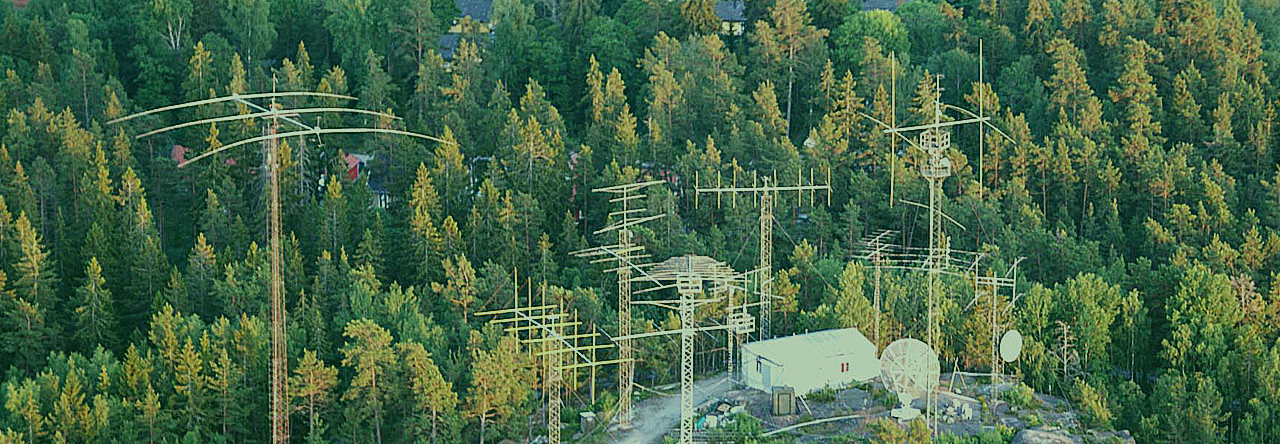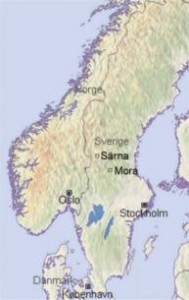| Kvarnberget (The Mill Hill) is a hilltop located in Vallentuna north of Stockholm. The location was originally used by the then Swedish Defense Research Institute (FOA), which used it for troposphere experiments. |
In the beginning…In 1956 FOA started continuous measurements on the frequency 3000 MHz with Kvarnberget as the transmitting station and the City Mora and the village Särna in Dalarna (Dalecarlia), about 300 respectively 400 kilometres away, as receiving stations. The objective was to gain knowledge of radio signal behaviour in the troposphere. Later on, in 1960, another link was also established on the 1000 MHz-band. Also some meteor scatter research has taken place at Kvarnberget.The equipment at Kvarnberget consisted of one transmitter with 800 W continuous power and a 10 meters parabolic dish on 1000 MHz and one transmitter with 500 kW pulse power and a 3 meters dish on 3000 MHz. The research resulted in several important pieces of knowledge on radio propagation, and a number of publications and formulas was presented. But everything needs to have an end. In 1978 FOA moved all its operations in this field to the city Linköping, and also all the activities at Kvarnberget then was closed down. A 22-year long period was over. |
The Amateur eraThanks to a number of curious hams, this fantastic QTH was discovered by radio amateurs. Calle SM5BF (SK), Affe SM5IQ (SK) and Bengt SMØHBV (SK), all members of Täby Sändareamatörer (TSA), are the people who are to be credited, and in 1982 after negotiations with FOA, hams were allowed to lease the hilltop. It was decided that the cost for Kvarnberget should be shared between TSA, Stockholms Radioamatörer (SRA) and Sollentuna Amatörradioklubb (SAK).
Today – Tomorrow Currently we are leasing the land from the local municipality Vallentuna Kommun but that is somewhat insecure. We are therefore continuously working on finding a permanent solution to keep this mountain as a nest for radio amateurs for years to come. | ||||||
| Thanks to Bengt SM0HBV, Affe SM5IQ and Danny SM0NBJ for the historical facts and to Göran SM0DRD for help with the proofread. |


